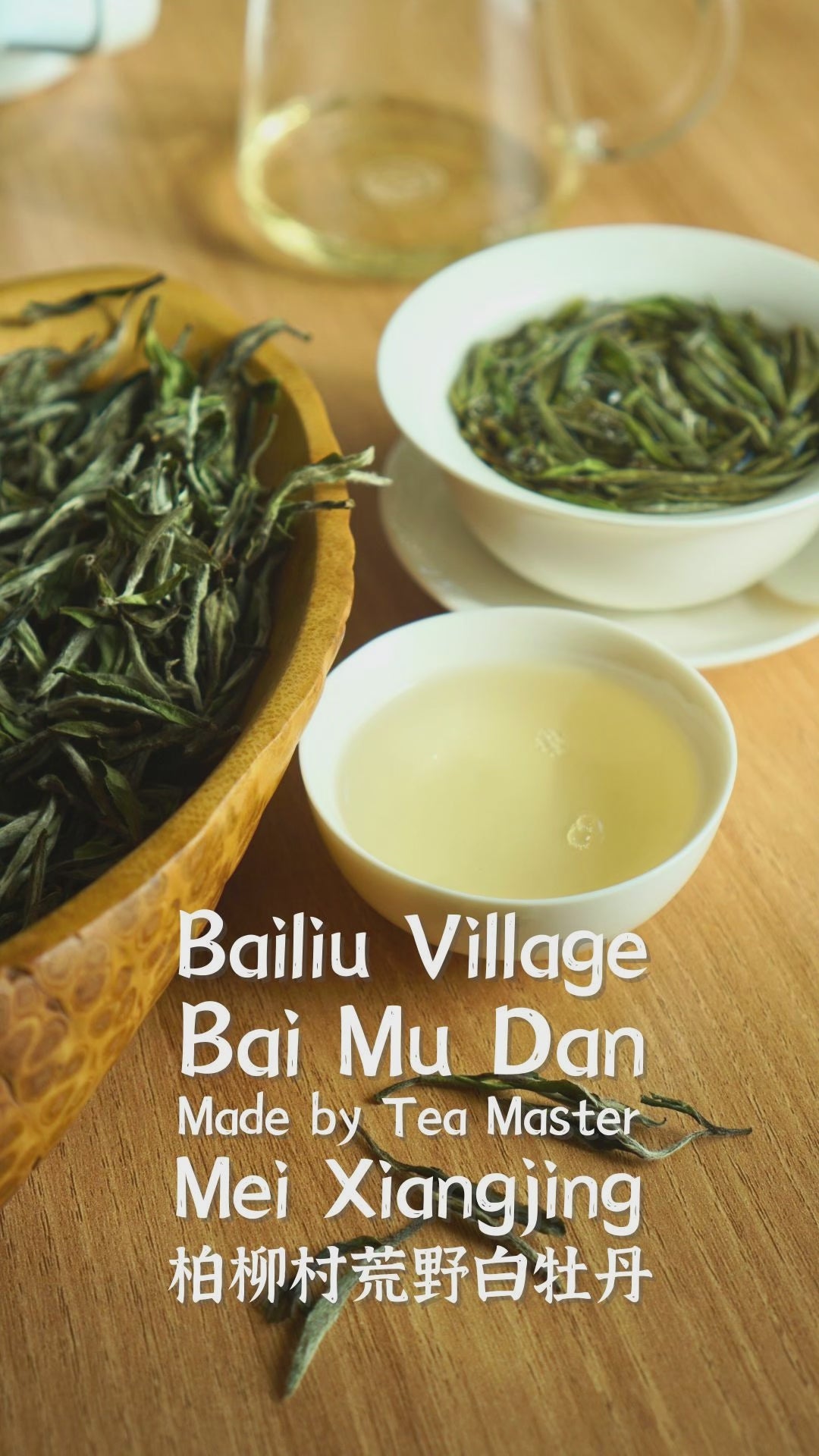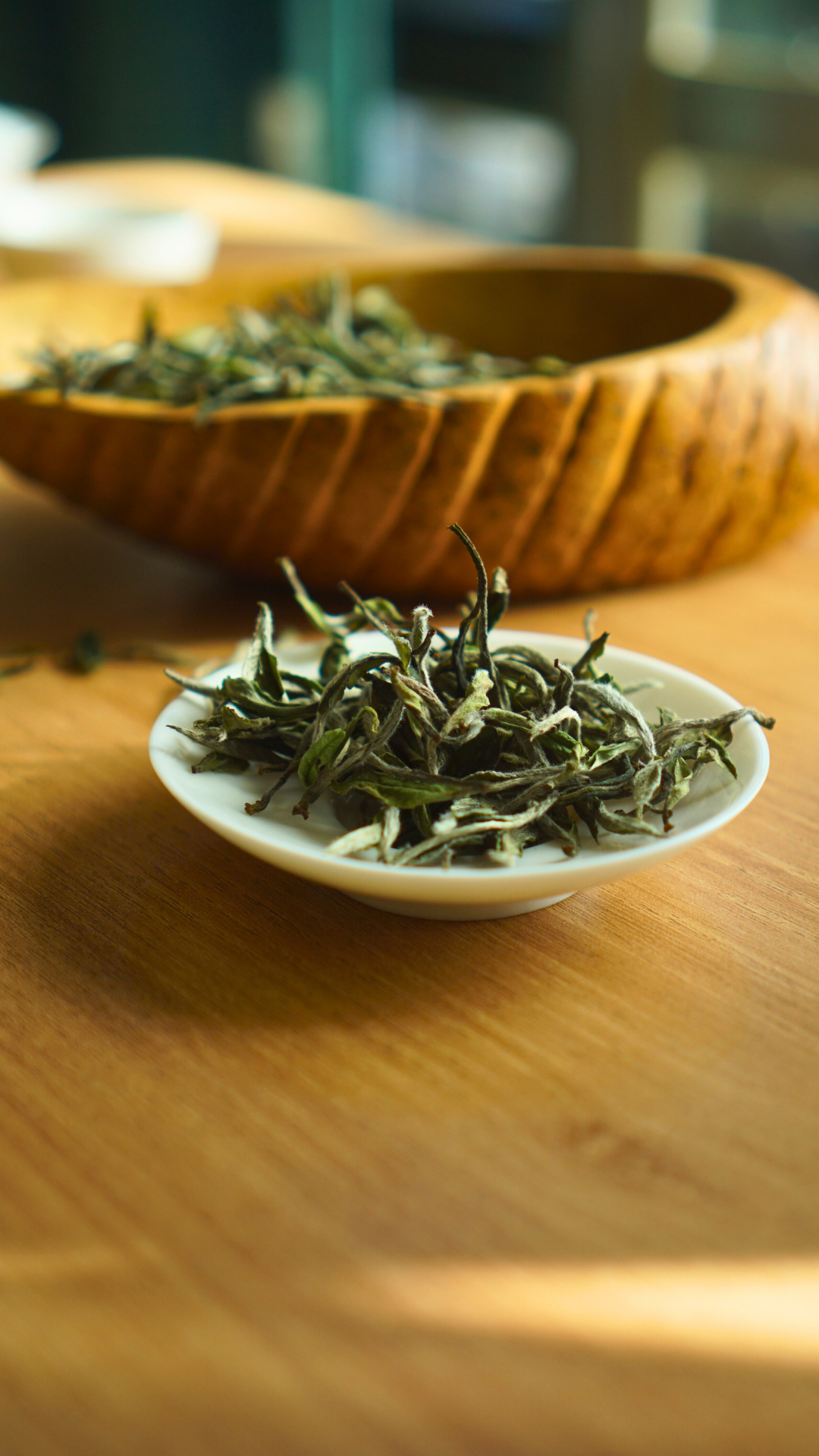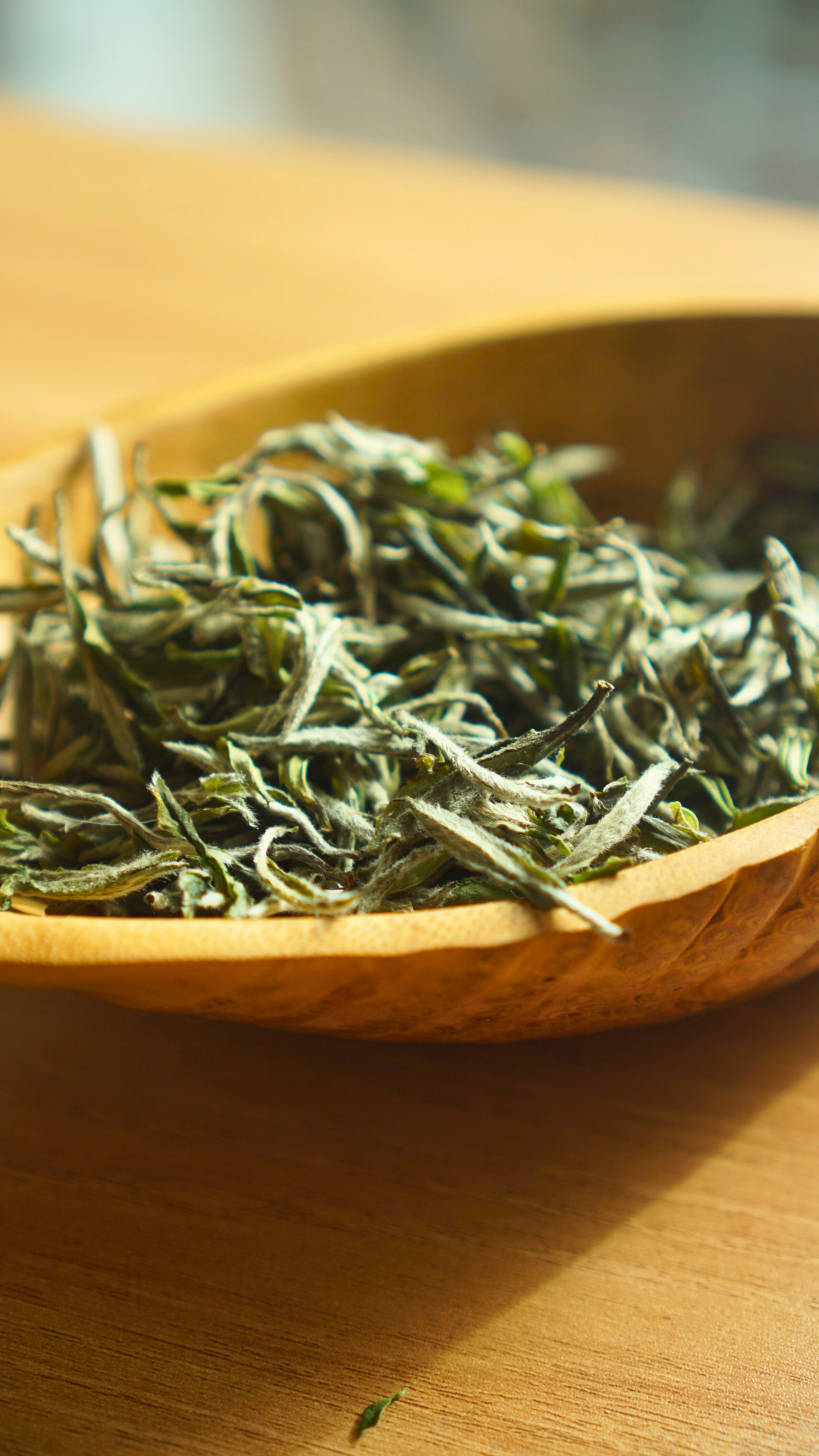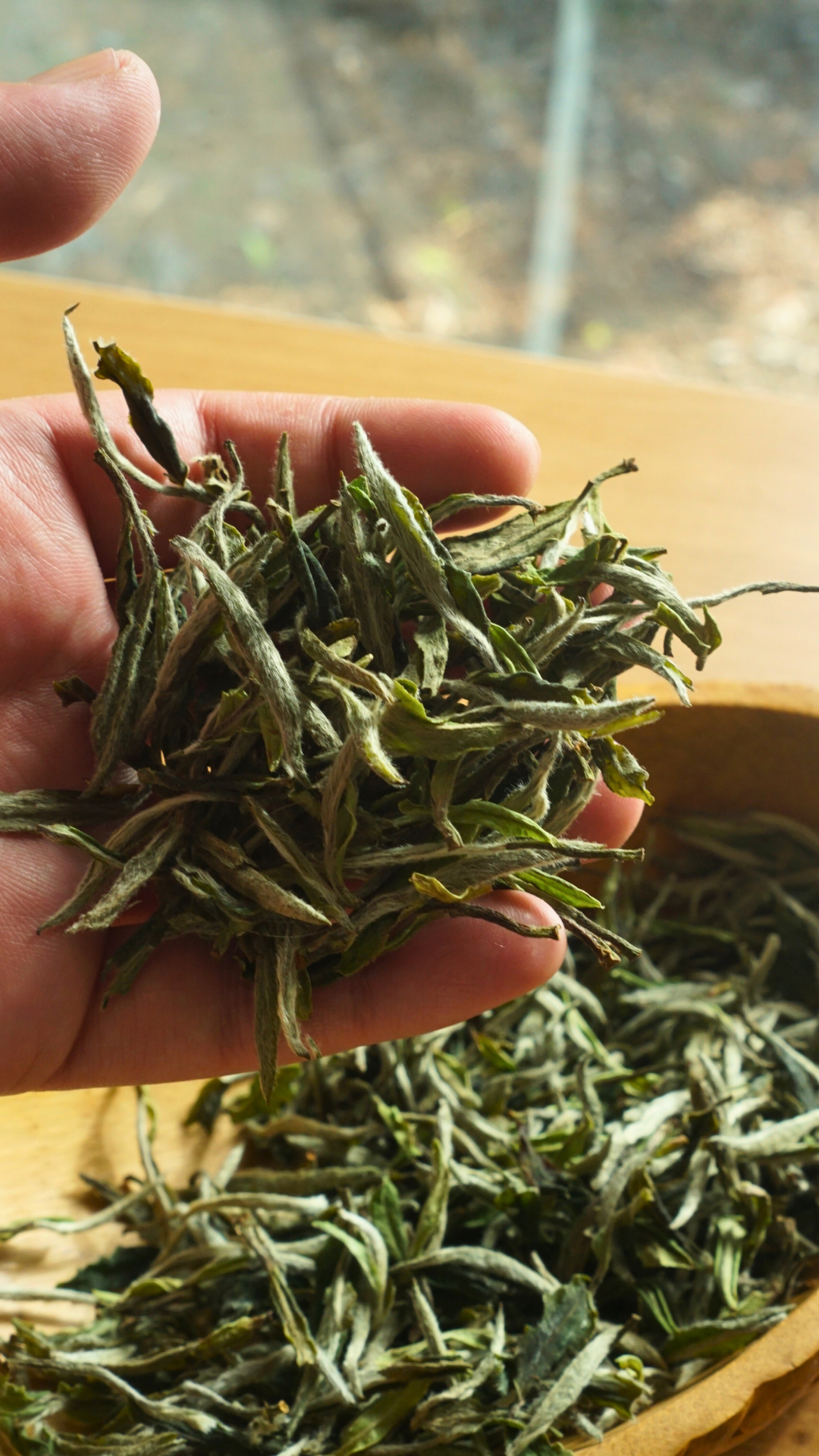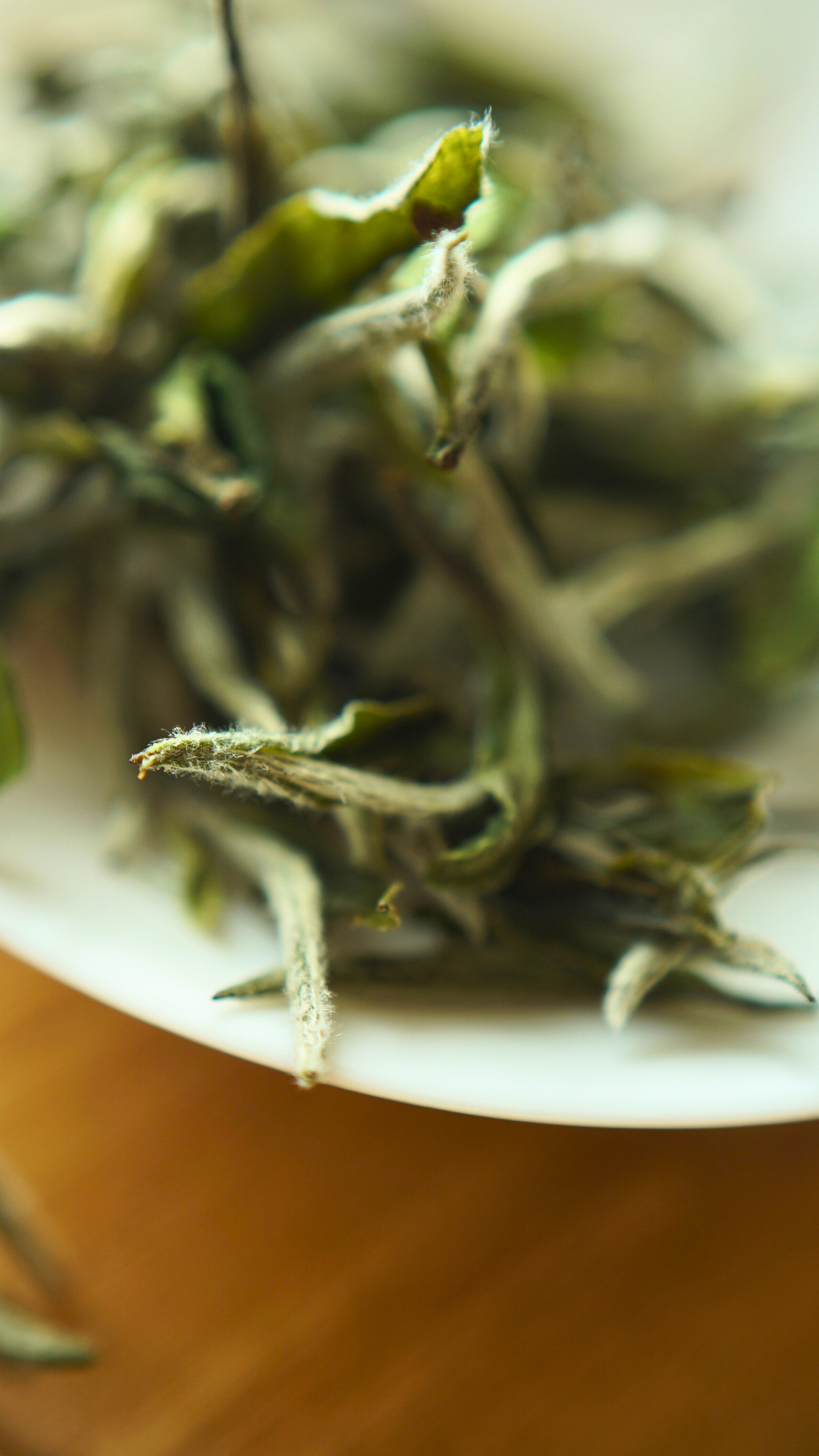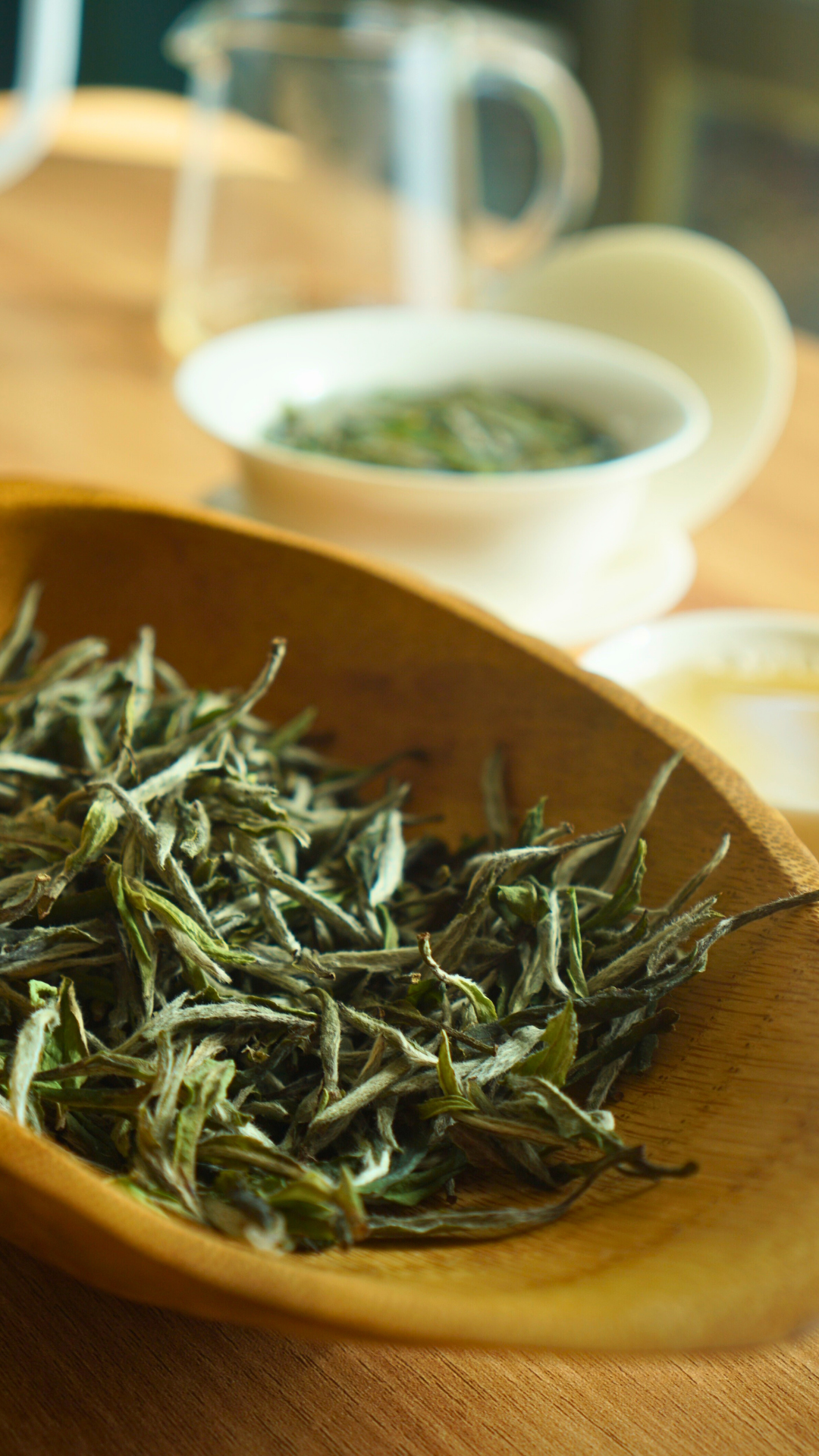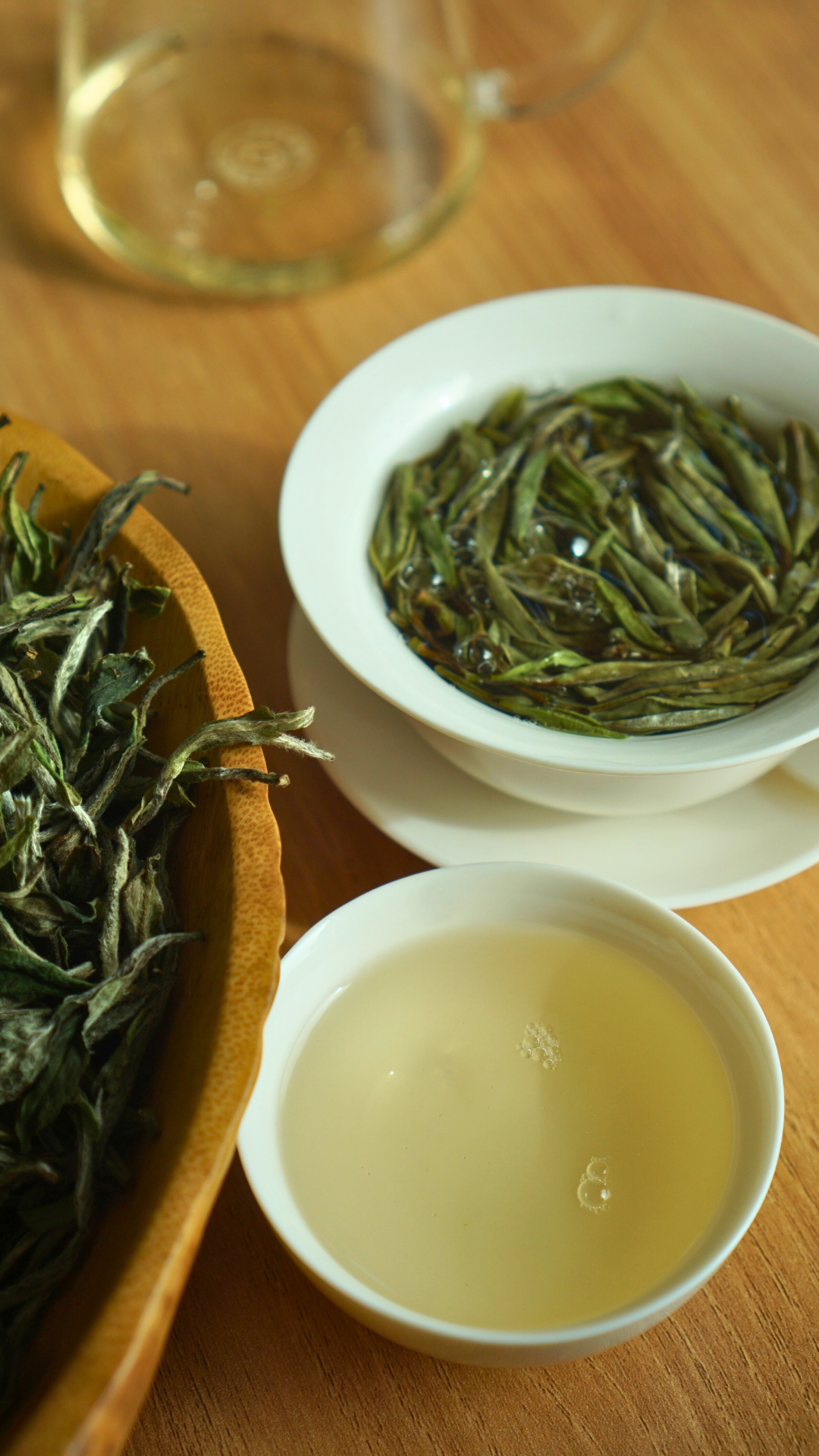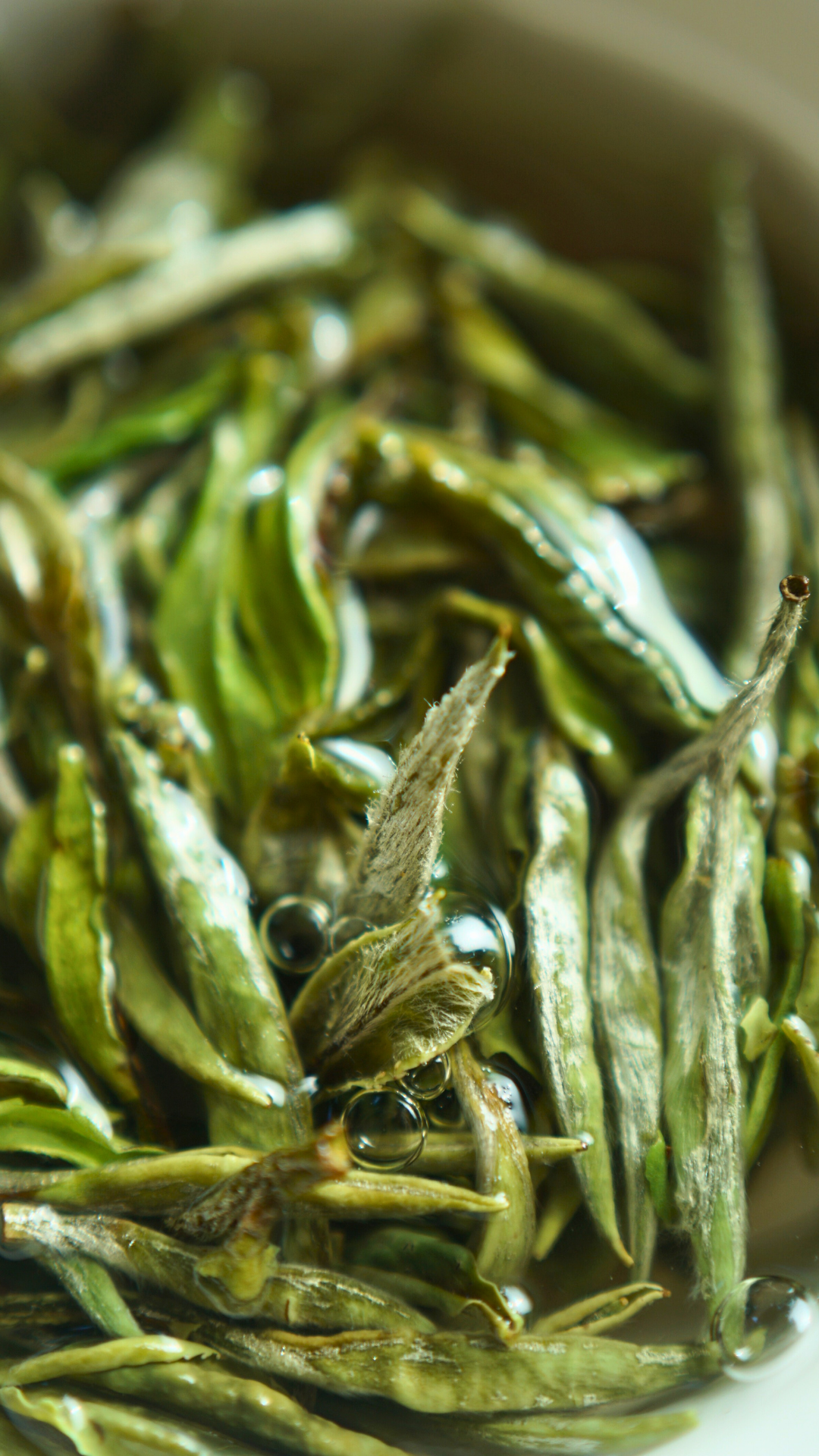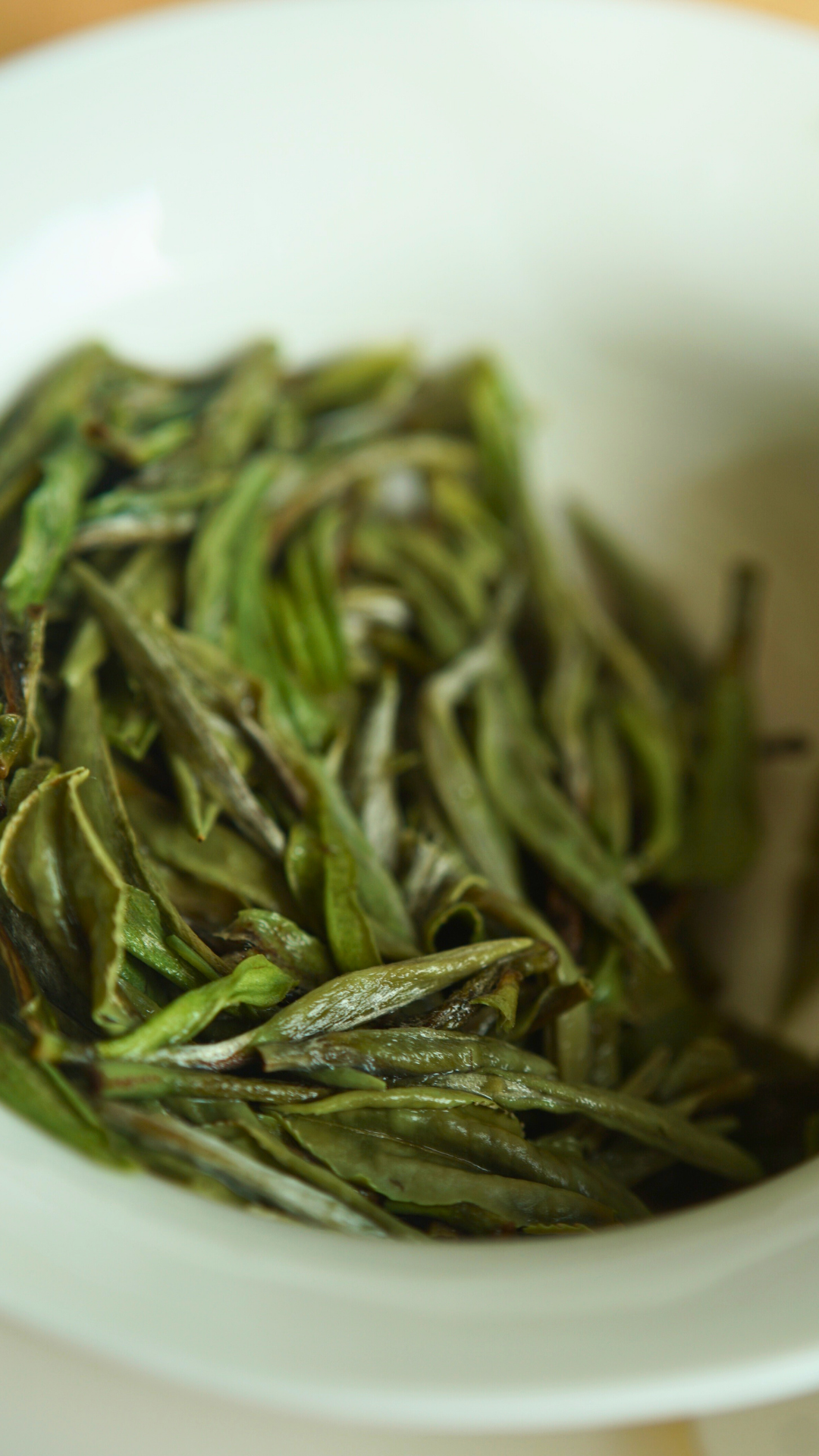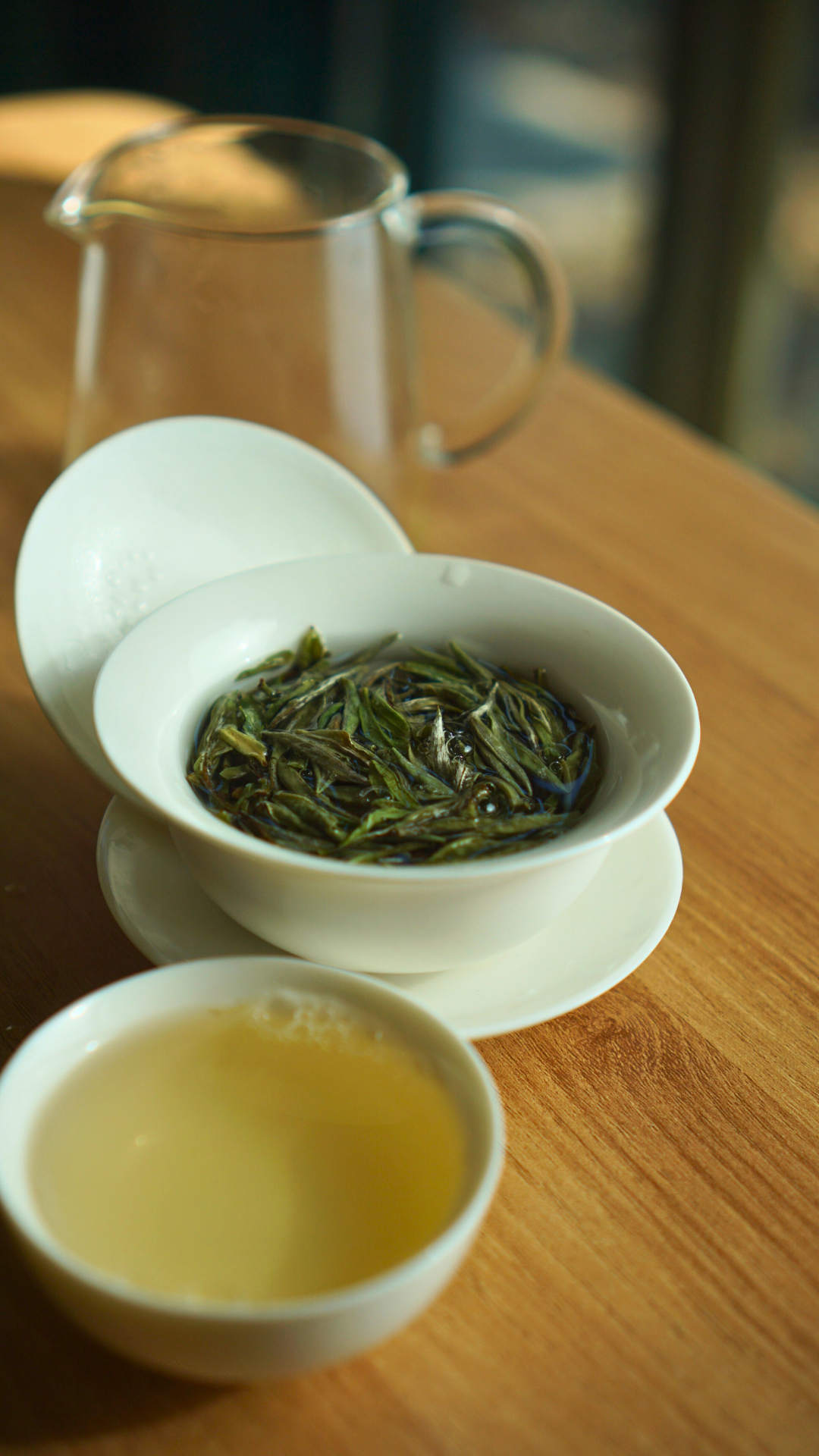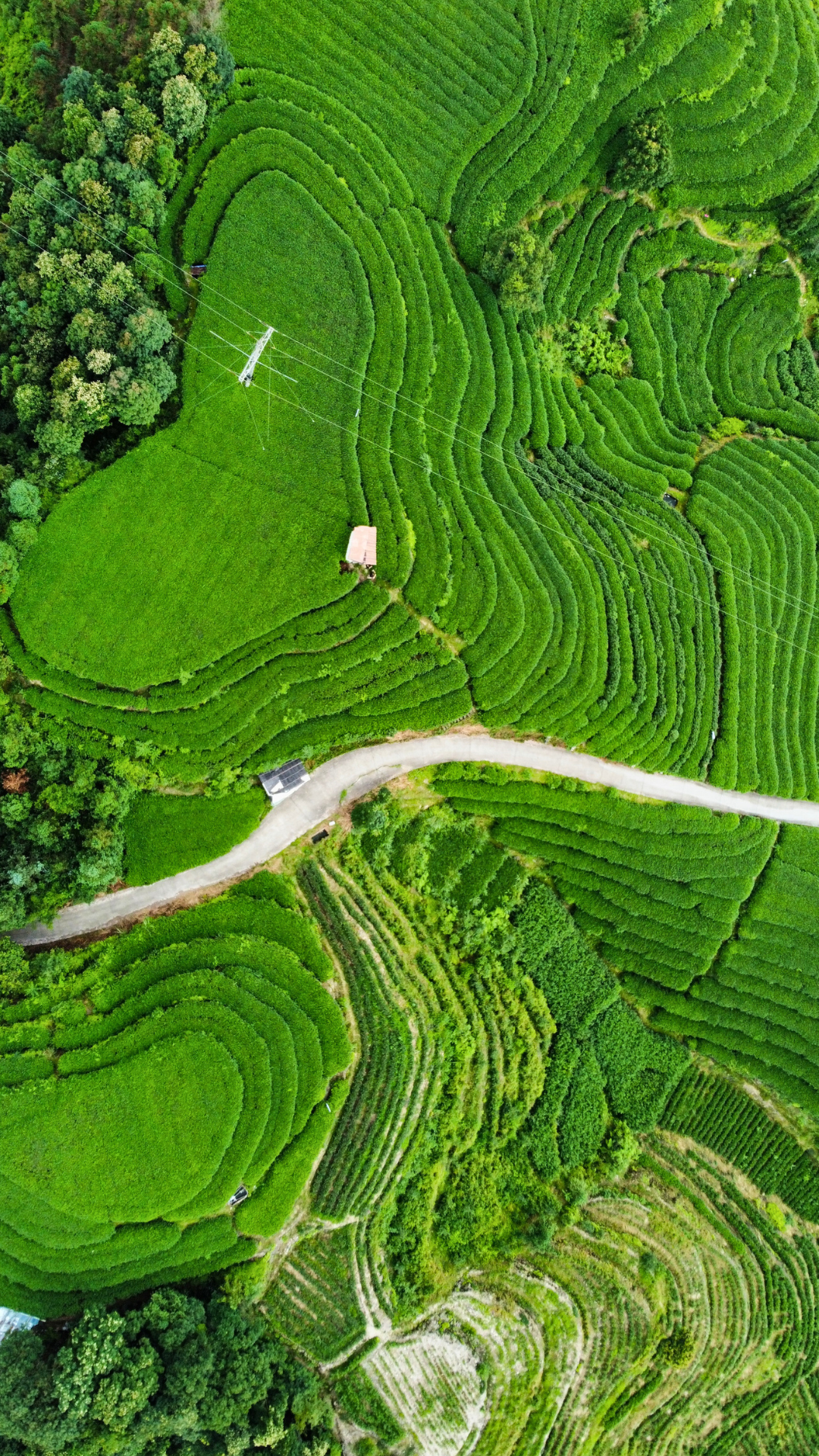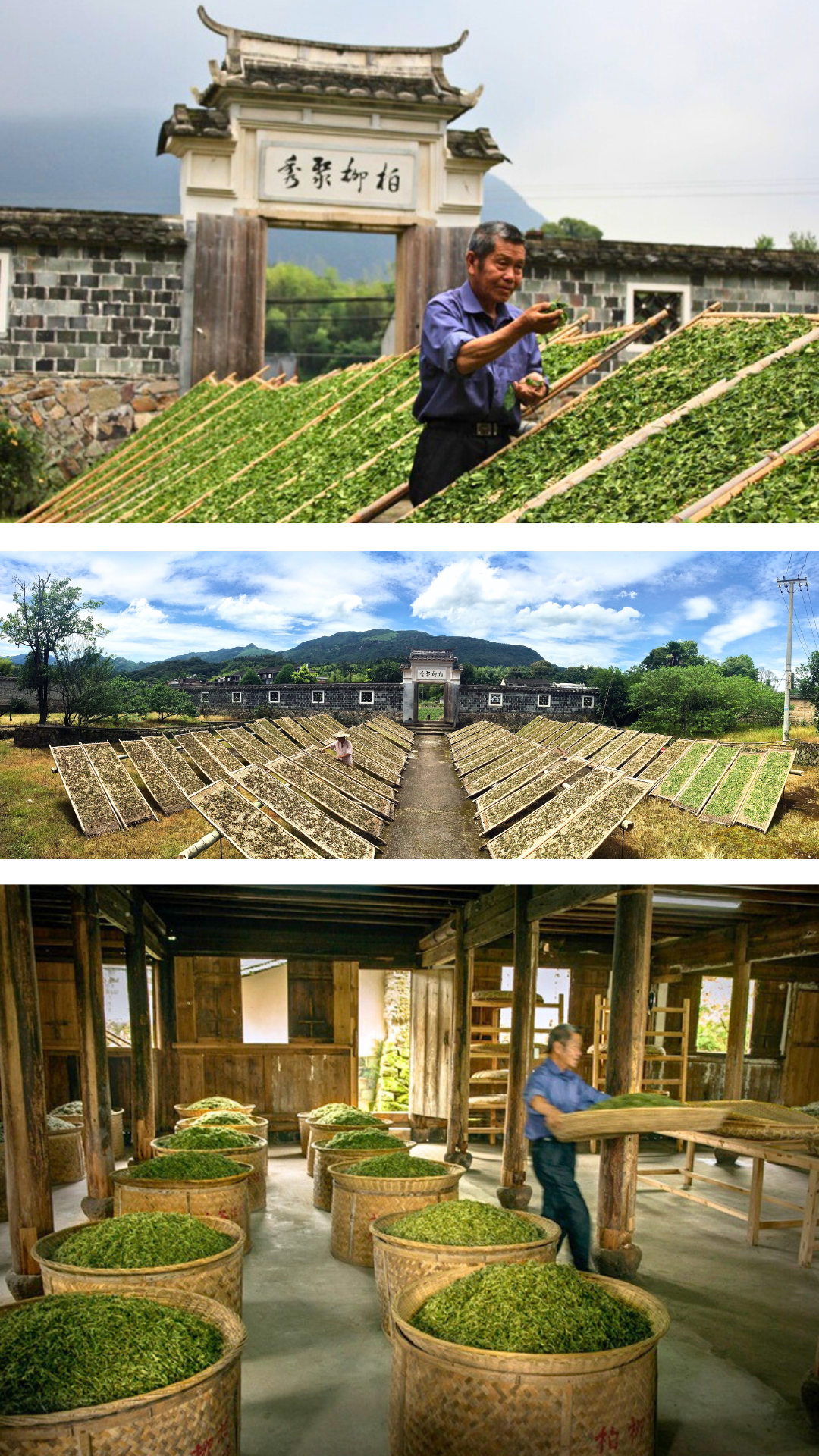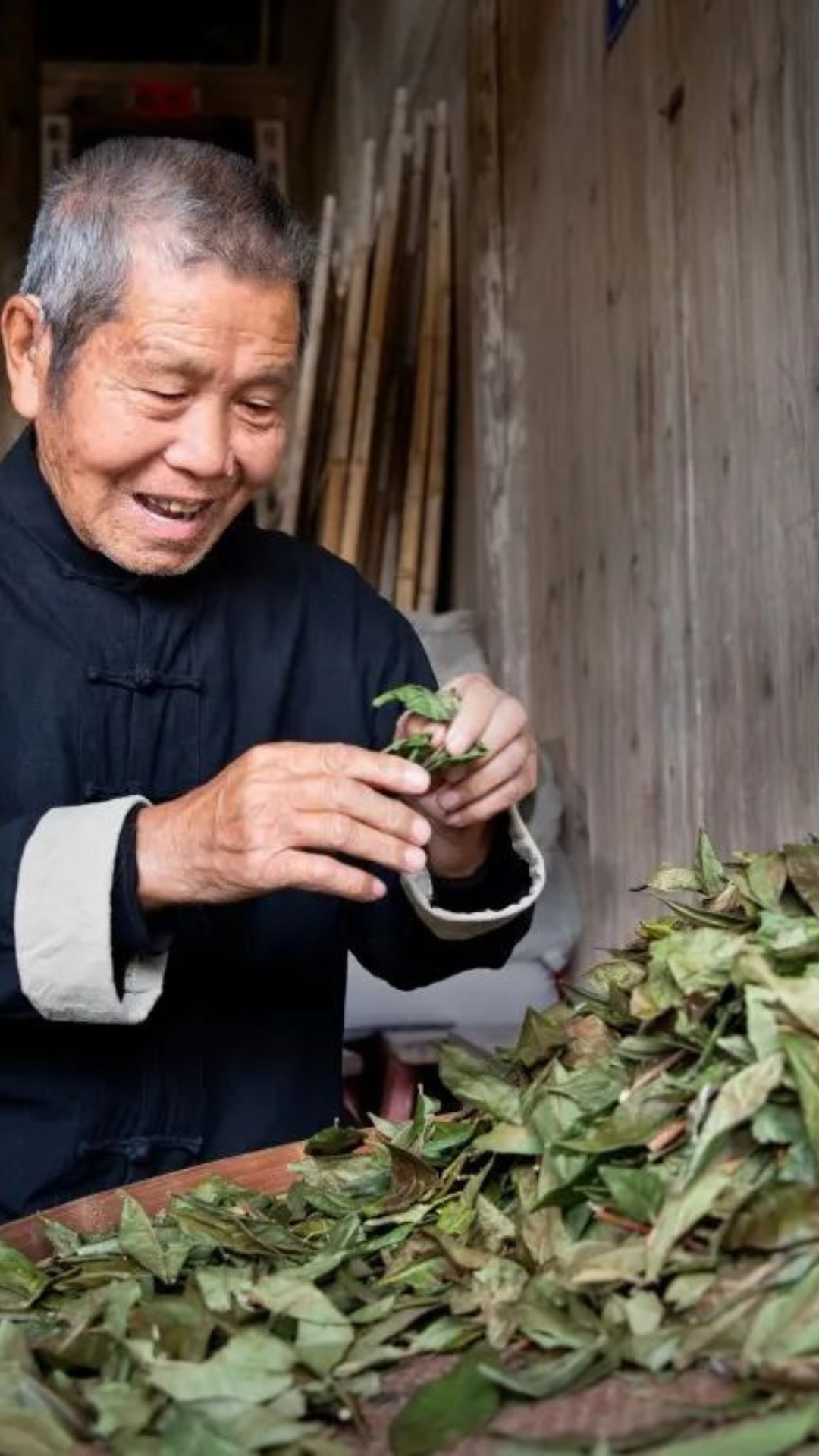Bailiu Village Bai Mu Dan Made by Tea Master Mei Xiangjing
Bailiu Village Bai Mu Dan Made by Tea Master Mei Xiangjing
制茶大师梅相靖监制柏柳村白牡丹
This Bai Mu Dan(white peony) white tea originates from Bailiu Village(柏柳村) in Diantou Town(点头镇), Fuding City(福鼎市), the birthplace of Fuding Dabai(Big White) Tea and known as the “First Village of Chinese White Tea.”
Bailiu Village(柏柳村) is the original production area and cradle of Fuding white tea, with over 100 years of history in cultivating Dabai Tea and traditional white tea processing techniques.
The village still preserves well-maintained ancient white tea workshops and the former residence of Mei Xiaoxi(梅筱溪), a renowned tea master from the late Qing Dynasty.
The tea gardens in Bailiu Village are widely distributed, and the tea trees grow in a pristine natural environment amid scattered rocks. The white tea produced here is known for its unique "rock rhyme" and orchid fragrance, with a tea soup that is rich and full-bodied.
This Bai Mu Dan white tea is supervised by Mr. Mei Xiangjing(梅相靖), the sole national-level inheritor of the intangible cultural heritage of Fuding white tea processing techniques.
The craftsmanship is meticulous, the production is exquisite, with dried tea appearing elegant and exuding a prominent orchid fragrance. The tea soup is mellow and smooth, with a sweet aftertaste and a lingering floral aroma.
Picking and Processing
Picking and Processing

The production process of white tea generally consists of two steps: withering and drying, with withering being the key stage.
Withering can be divided into indoor natural withering, mixed withering, and heated withering. It must be flexibly adapted to the climate, and for sunny spring and autumn days or clear summer days without oppressive heat, indoor withering or mixed withering is preferred.
The refining process involves removing stems, flakes, wax leaves, red leaves, and dark leaves, then baking over a gentle heat until sufficiently dry. This enhances the tea’s aroma with a subtle roasted scent. When the moisture content reaches 4%–5%, the tea is packed while still warm. The hallmark of white tea processing is that it neither destroys enzyme activity nor promotes oxidation, instead allowing for mild natural oxidation while maintaining the delicate aroma of the tea buds and a fresh and brisk flavor in the brew.

- Picking
White tea is picked when temperatures allow for tender, fresh leaves with one bud and one unfolding leaf in a jade white color. The process involves picking early, picking tender leaves, picking frequently, and ensuring clean picking. Buds and leaves must be uniform in size and shape, and the stems kept short. The tea is handled gently during harvesting, placed lightly in bamboo baskets, and transported in bamboo containers.

- Withering
Freshly picked leaves are spread evenly on bamboo trays in a thin layer and should not be disturbed. After spreading, the type of withering—indoor natural withering, mixed withering, or heated withering—is chosen based on the climate conditions and leaf grade. When the leaves are 70%–80% dry, both indoor natural withering and mixed withering require sieving.

- Drying
Initial drying: Dryer temperature at 100–120℃ for 10 minutes. Cooling: Spread and cool for 15 minutes. Re-drying: Dryer temperature lowered to 80–90℃, with low-temperature long drying at around 70℃.

- Storage
Dried tea leaves should have a moisture content of 5% or less and be stored at room temperature.
Brewing
Brewing
The brewing methods for new white tea, such as Baihao Yinzhen(silver needle downy tips) and Bai Mudan(white peony), are basically the same as those for green tea. However, since white tea is not rolled, the tea juices are not easily extracted, so the steeping time should be relatively longer.

Generally, 3–5 grams of white tea can be placed in a colorless, transparent glass cup that has been rinsed with boiling water. Add 200 milliliters of boiling water. At the beginning, the tea buds float on the water's surface. After 5–6 minutes, some buds will sink to the bottom of the cup, while others will suspend near the upper portion of the tea infusion. At this point, the tea buds stand upright, crossing up and down, resembling stalactites; it is quite a spectacle. After about 10 minutes, the tea infusion turns golden yellow and can be enjoyed. During this time, you can enjoy the sight while sipping the tea, washing away worldly distractions and filling yourself with pleasant interest.

You can also use a white porcelain gaiwan. Add 3–5 grams of white tea and pour in 150 milliliters of 95°C hot water. Cover and steep for about 2 minutes, then pour the tea infusion into a serving pitcher.
If you prefer the light and delicate aroma and taste of white tea, you can pour out the tea infusion after steeping for just 20 seconds. For subsequent brews, gradually increase the steeping time.

Aged white teas, such as Gongmei and Shoumei, can be cooked:
Aged white tea can either be cooked directly or brewed a few times before cooking. Choose a suitable utensil for brewing tea, such as a ceramic teapot, iron kettle, silver pot, or glass teapot. Place a proper amount of aged white tea, such as Shoumei or Gongmei, into the pot and add room-temperature water. Heat it until boiling, and let it simmer for a few minutes. The cooking time can be adjusted based on personal taste. Pour the cooked tea into a fairness cup, then distribute it into smaller tasting cups for drinking.
*Note:*
New white tea tends to become astringent when cooked for too long, so it’s not recommended to cook new tea. Likewise, Baihao Yinzhen and Bai Mudan, which are relatively tender, are not suitable for cooking.

When cooking aged white tea, you can also add other ingredients, such as red dates, honey, goji berries, lemon, dried tangerine peel, fruits, or dried flowers (jasmine, chrysanthemum, rose, osmanthus, etc.). This adds a special flavor unique to each addition and can also provide certain health benefits. For example, red date white tea combines the heat-clearing, fire-reducing properties of white tea with the qi and blood-boosting effects of red dates. Mixing an appropriate amount of aged white tea with red dates helps to improve digestion and boost blood health, making it ideal for consumption during the autumn and winter seasons.
The cold-brew method is suitable for high-grade white buds, such as Baihao Yinzhen and Bai Mudan:

Find a suitably sized kettle or bottle. Add an appropriate amount of loose tea, with the quantity adjustable based on personal preference. Add sufficient cold water (filling the container is fine) and optionally some ice cubes. After 1–2 hours, it’s ready to drink, or you can refrigerate it overnight. By the next day, you’ll have a chilled, sweet, and mellow cold-brew tea.
Cold-brewed tea is very suitable for hot weather. However, for those with sensitive digestion or weak stomachs, it’s best not to drink too much cold-brewed white tea. It’s recommended for such individuals to drink more warm white tea instead.
White Tea Storage
White Tea Storage
White tea is easy to store, as it can be preserved for a long time under dry, light-proof, and odor-free conditions.
In Fuding's folk culture, there is a saying, "One year as tea, three years as medicine, seven years as treasure," suggesting that the older the white tea, the higher its medicinal value.
In fact, research comparing the health benefits of white tea stored for 1 year, 5 years, and 20 years has confirmed that with extended storage time, aged white tea demonstrates better effects in anti-inflammatory, antiviral, blood sugar-lowering, uric acid-reducing, and repairing alcohol-induced liver damage compared to fresh white tea. This is because, as the years go by, the flavonoid content in white tea increases, enhancing its antioxidant and anticancer effects.
Additionally, aged white tea is detoxifying without causing a cooling effect on the body and has a sweeter, smoother, and mellower taste compared to new tea.
The longer it is stored, the more its aroma evolves: fresh white tea from the same year has a unique "silver needle fragrance with honey notes," transitioning to a lotus leaf aroma after 3–8 years, a jujube-like fragrance after 8–15 years, and a herbal scent after 15 years or more.
Meanwhile, for high-grade white teas like Baihao Yinzhen (Silver Needle) and Bai Mudan (White Peony), the optimal drinking period is usually around 3 to 5 years.
After being stored for a certain number of years, the astringency of the fresh tea fades, leaving behind a sweet and mellow taste, making it ideal for consumption.
Good aged white tea has a liquor color resembling amber, bright and glossy. Its flavor is rich and full-bodied, smoother on the palate, with sweetness and viscosity gradually increasing. The dry leaves exude a sweet aroma, and upon careful observation, you can detect a subtle lotus fragrance.
The moment the tea is brewed, the liquor's golden hue is alluring. Upon tasting, the sweetness bursts on the taste buds, filling the heart with delight. It feels smooth and soothing, bringing a sense of serenity and physical comfort with every sip.

- Loose White Tea
- 500g/pouch
- Free Shipping
Couldn't load pickup availability
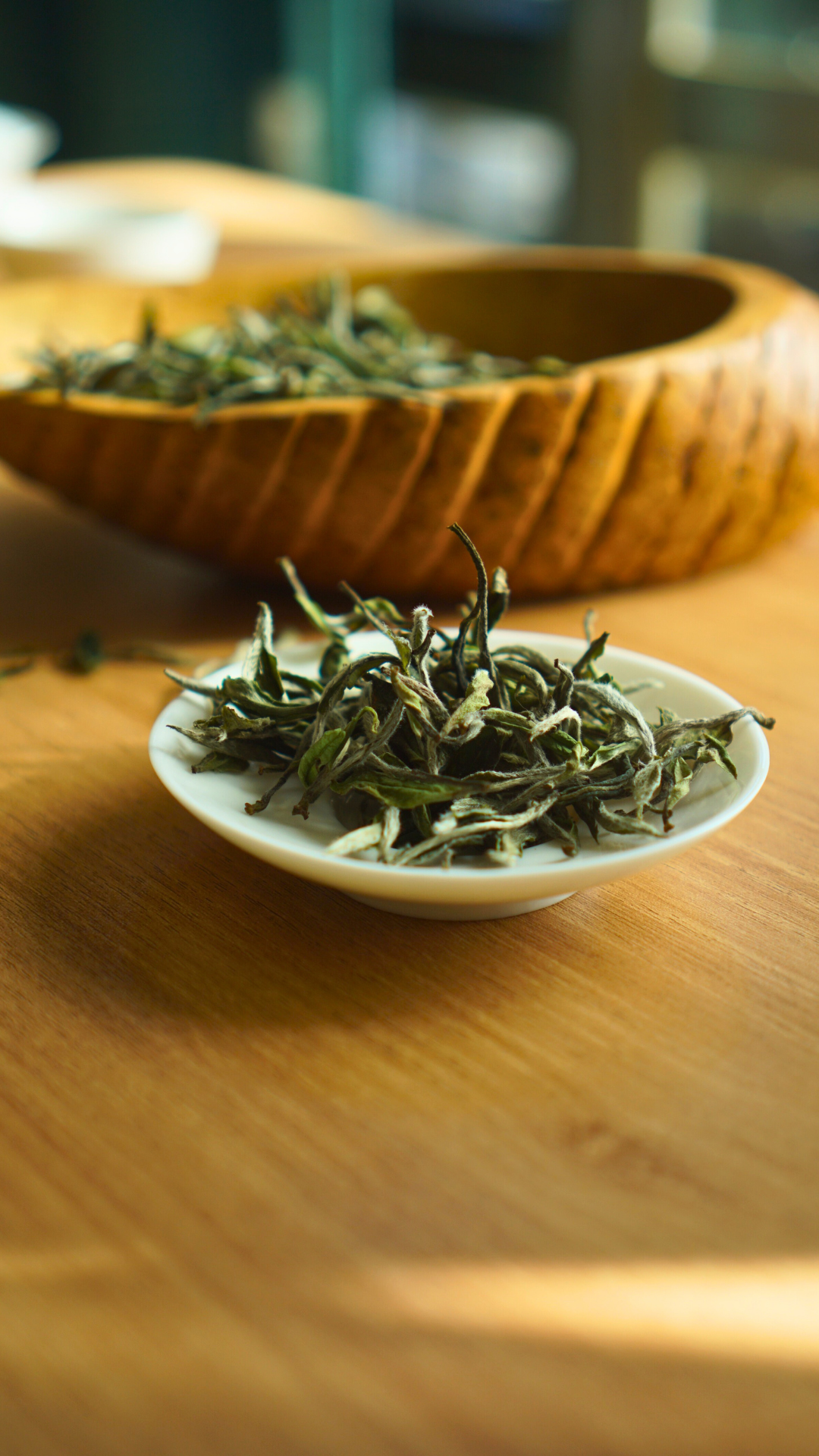
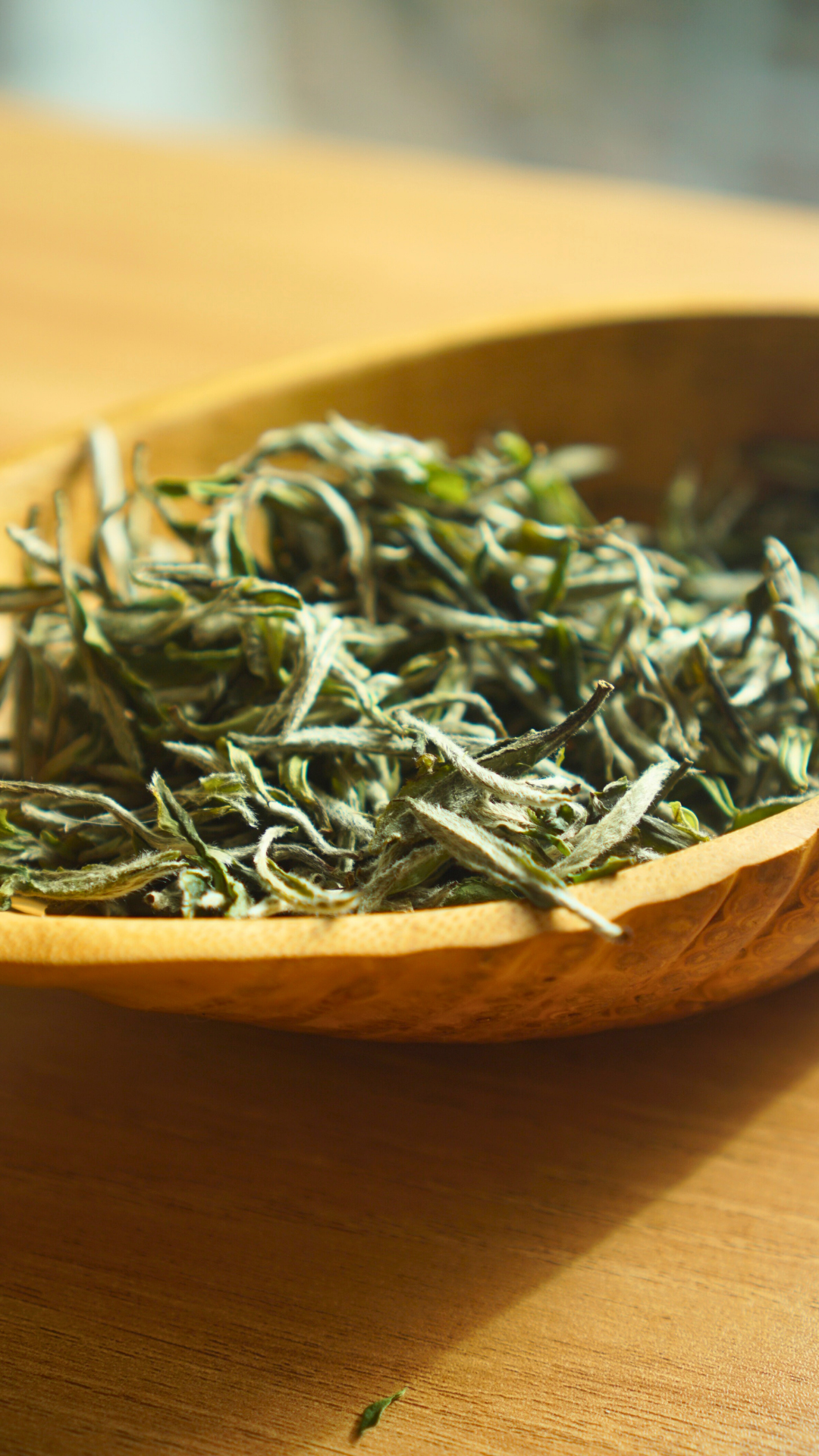
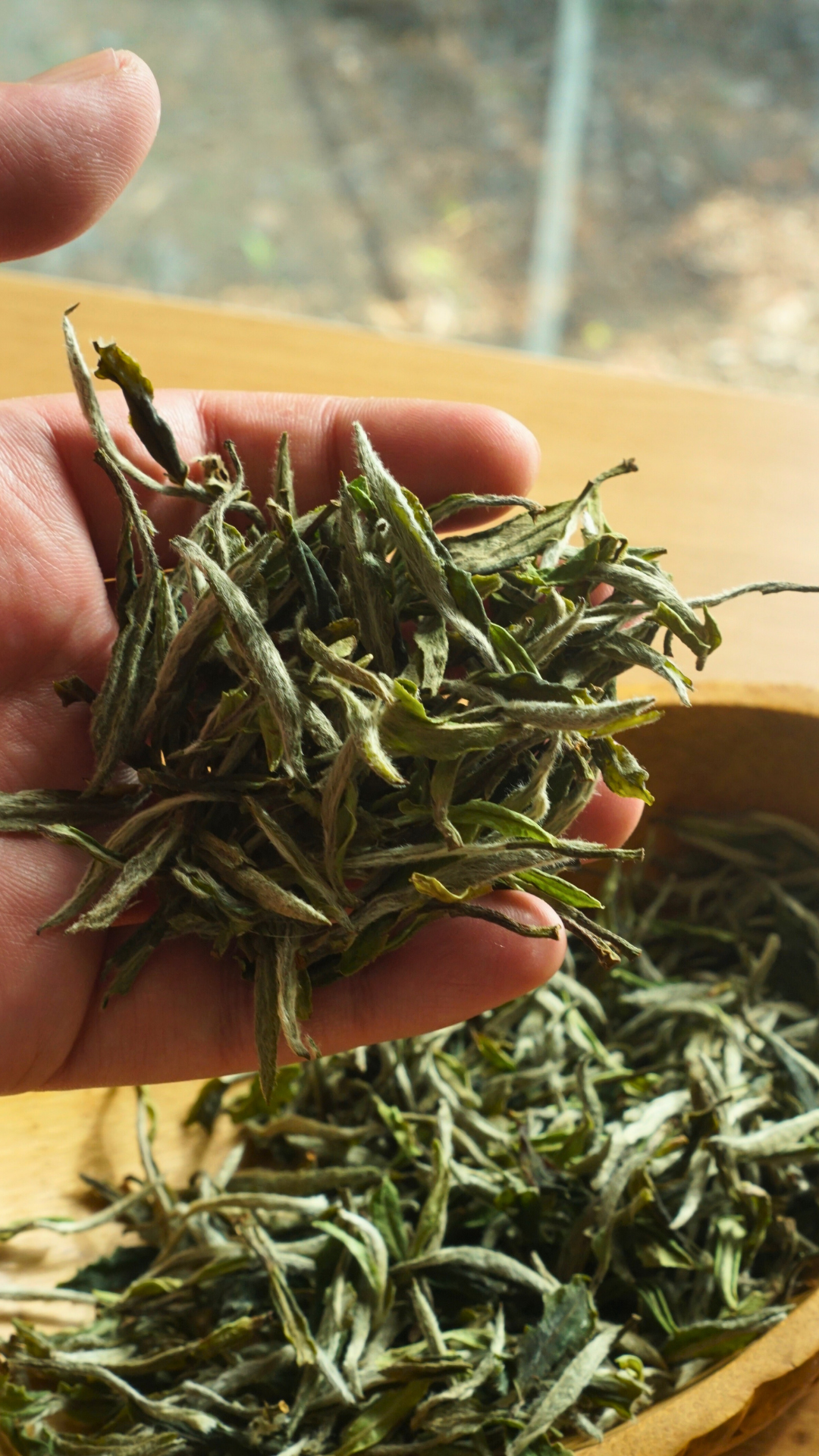
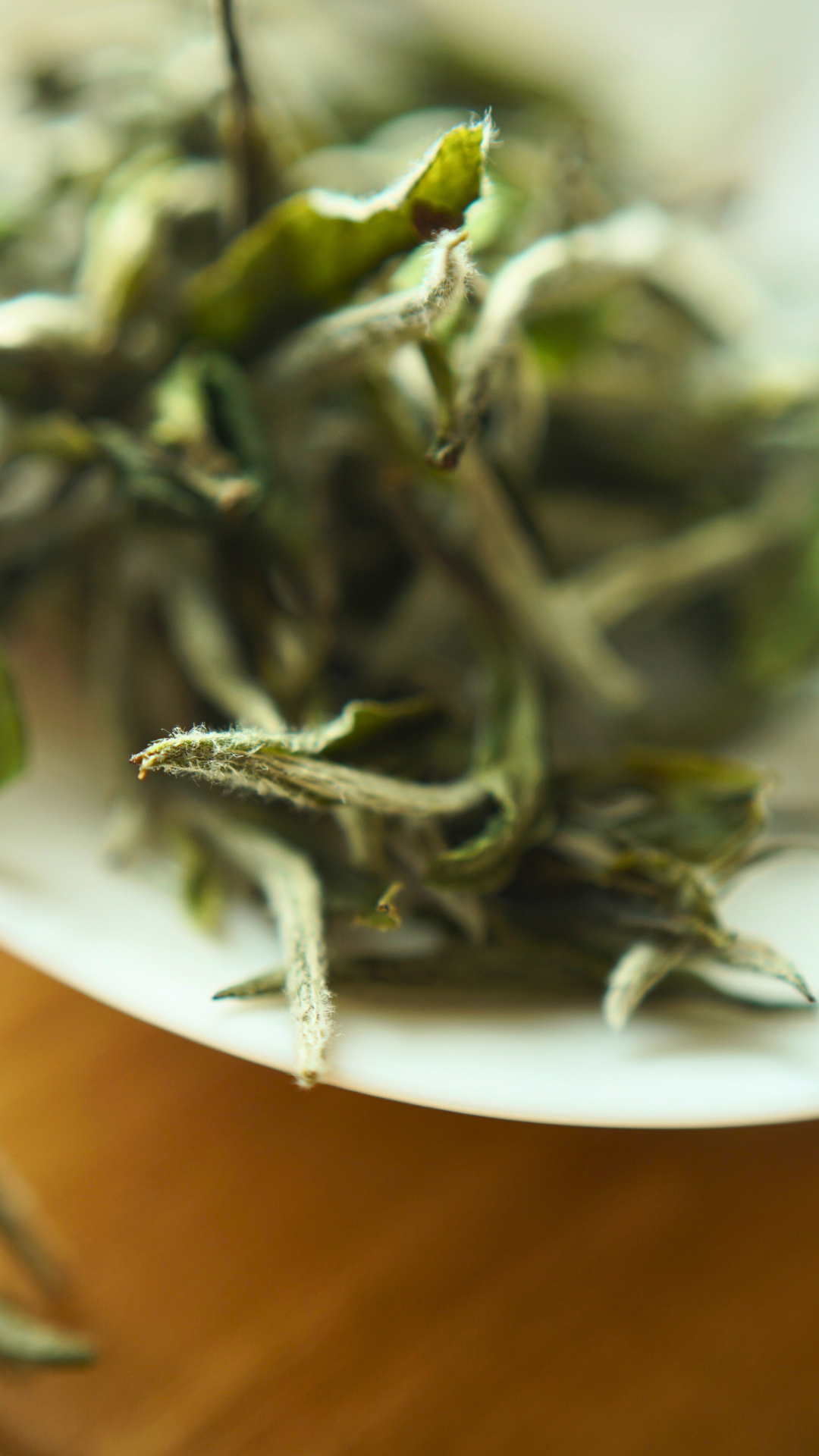
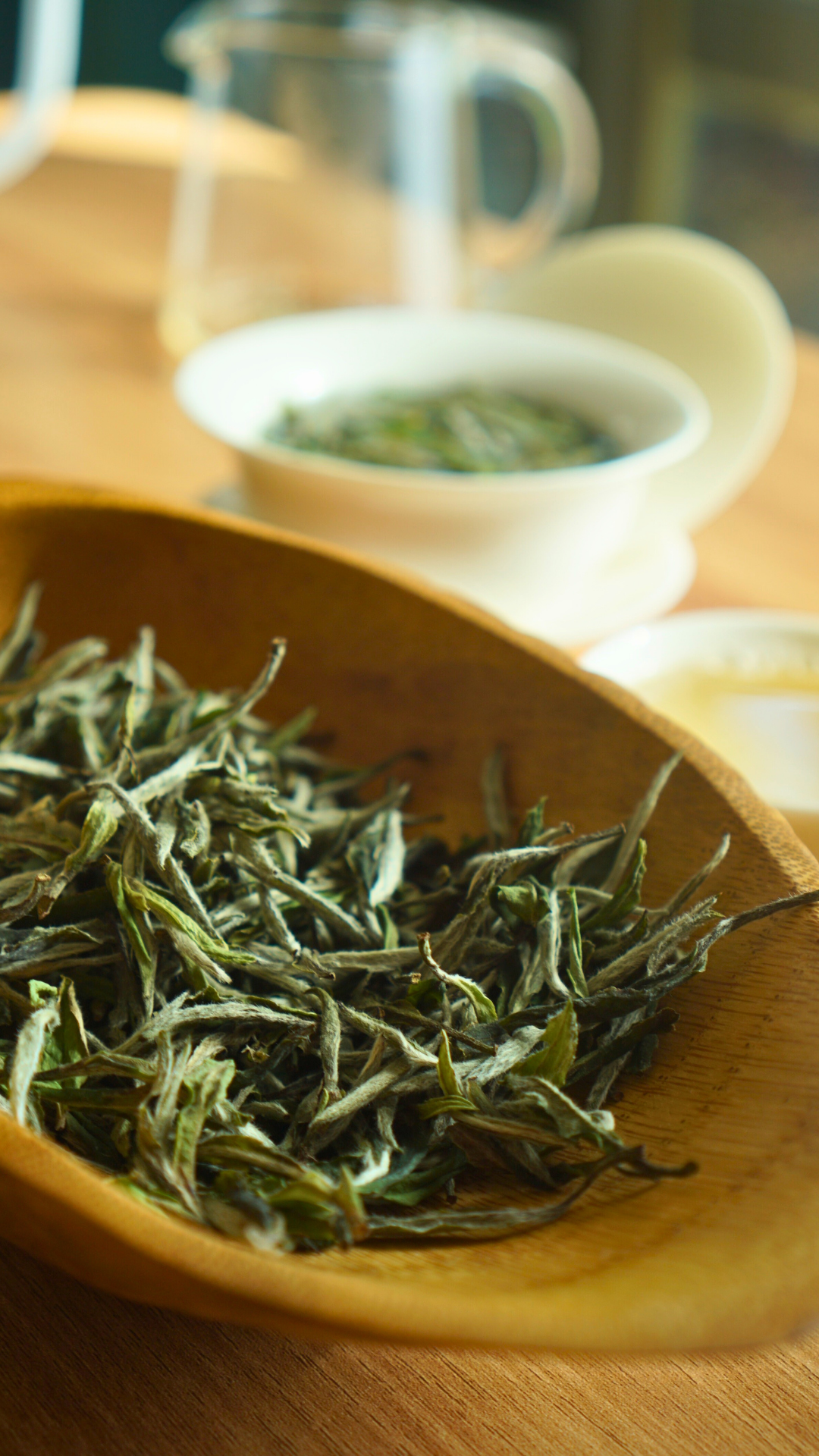
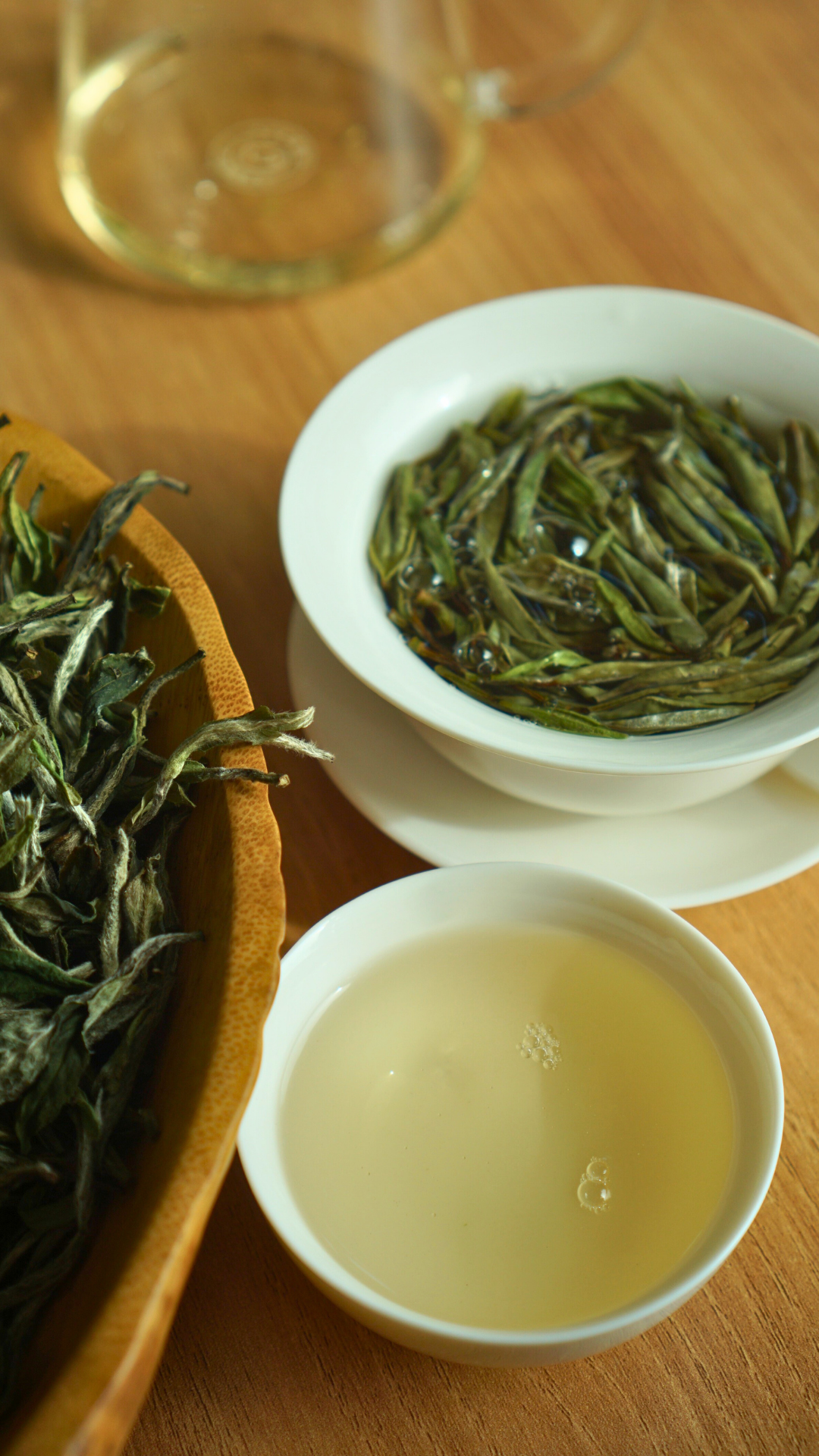
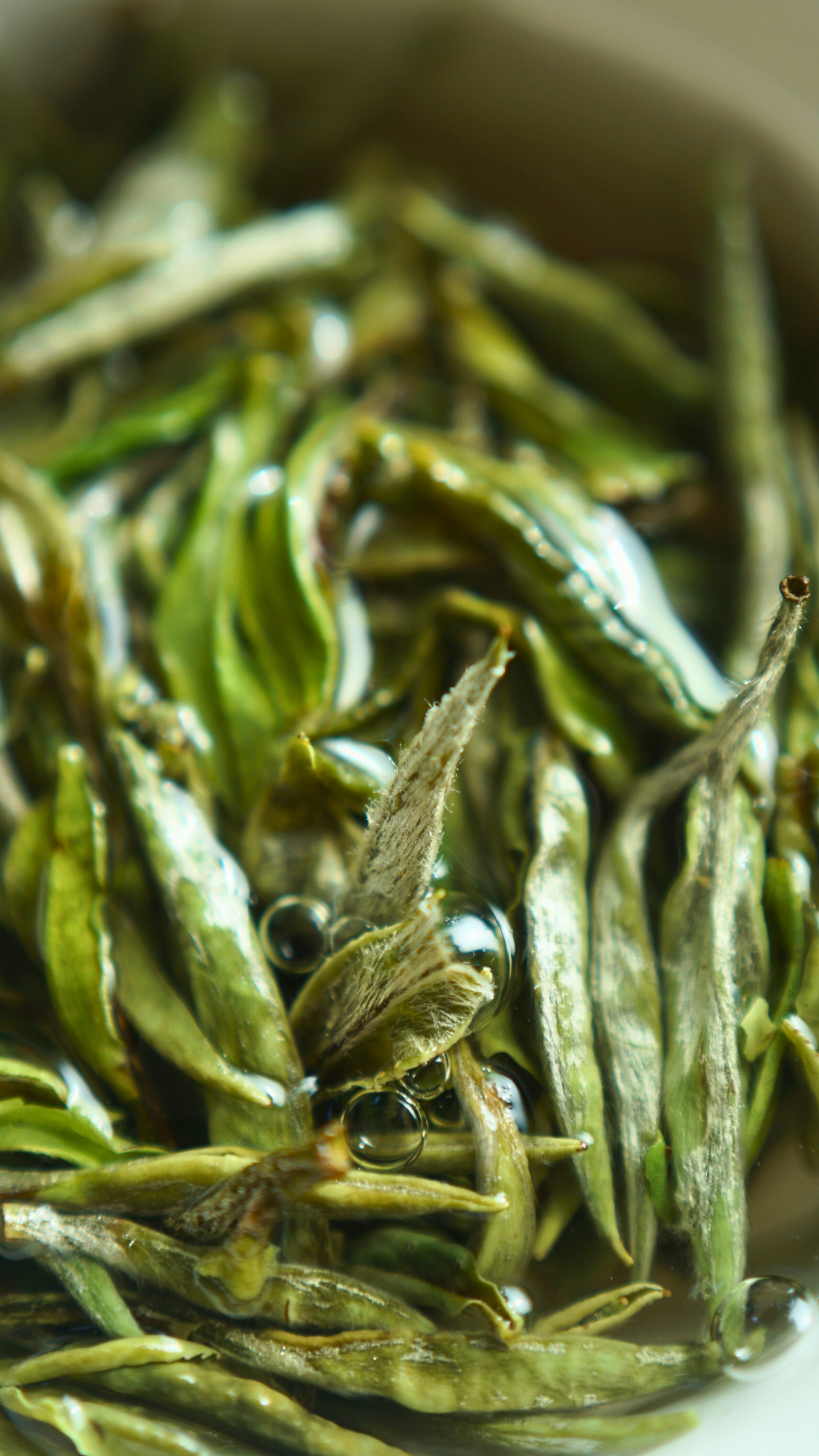
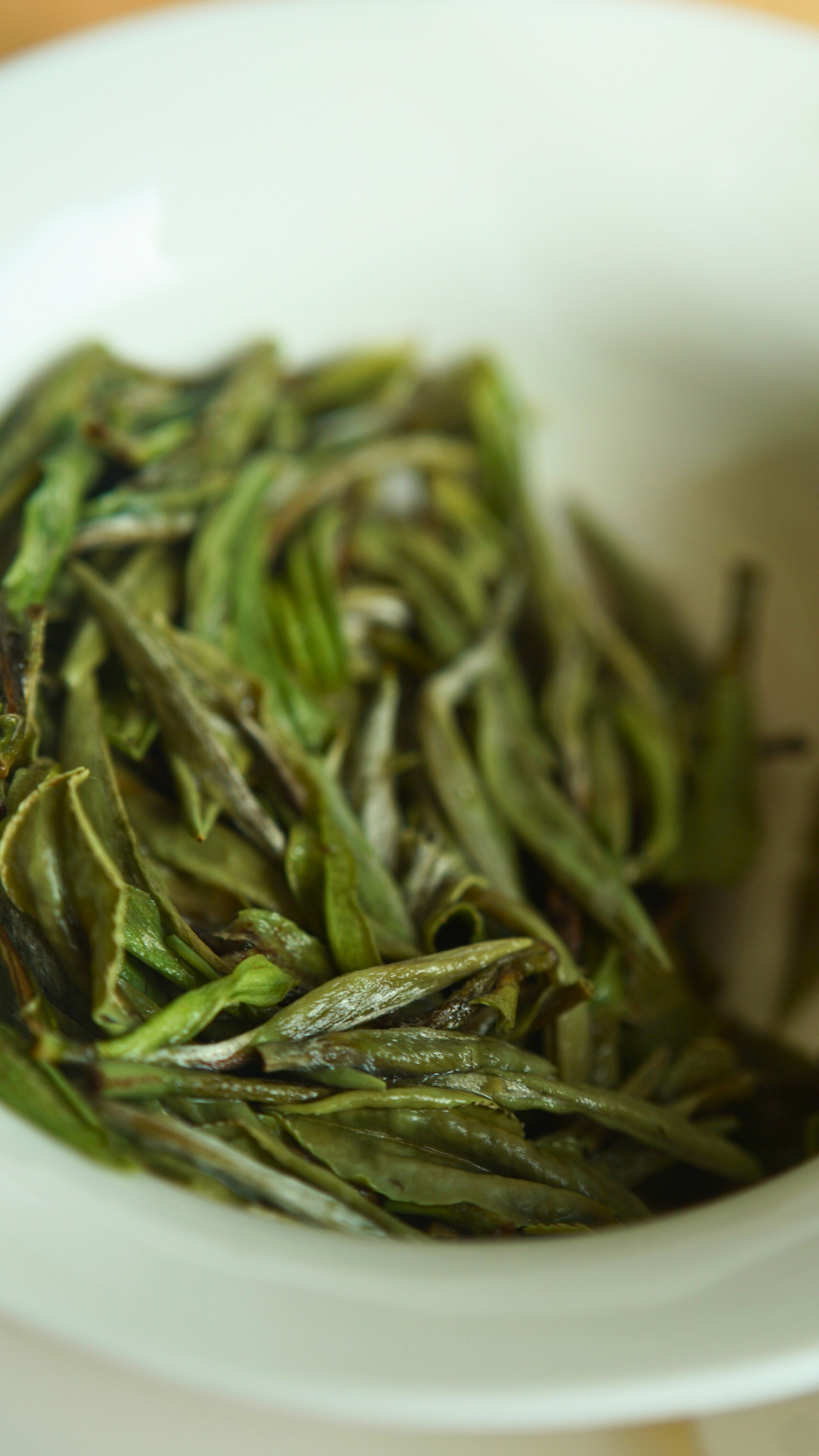
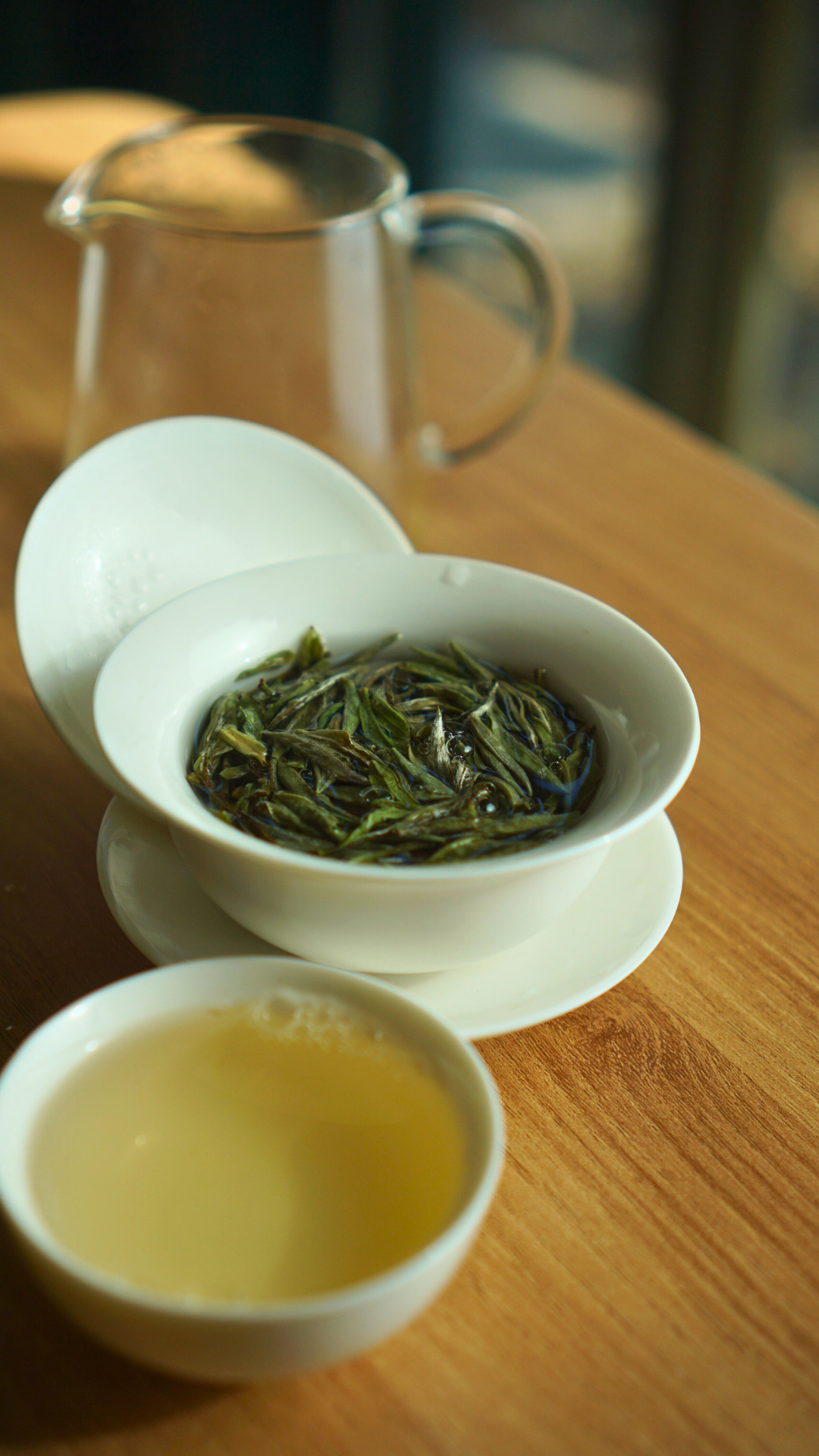
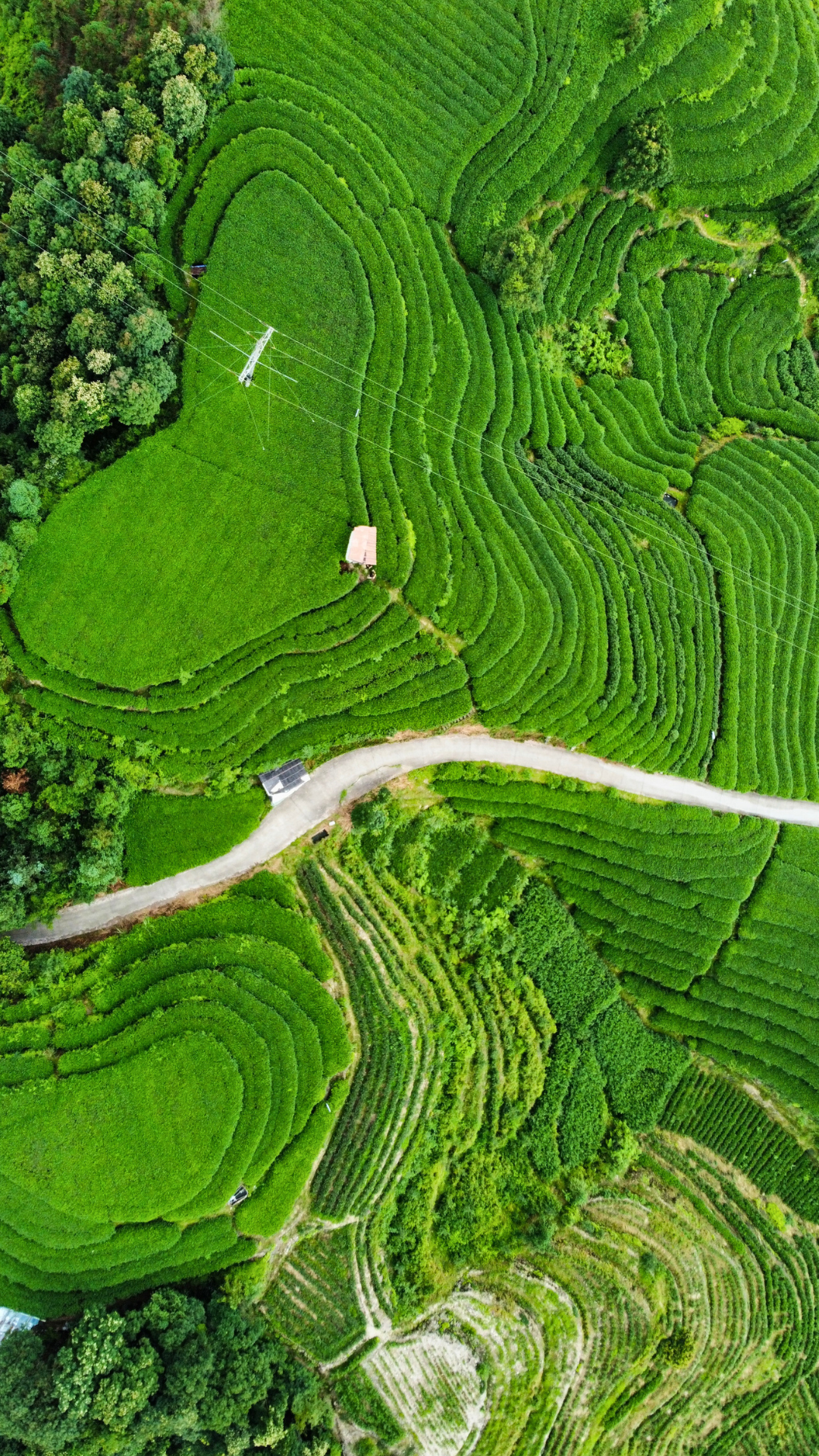
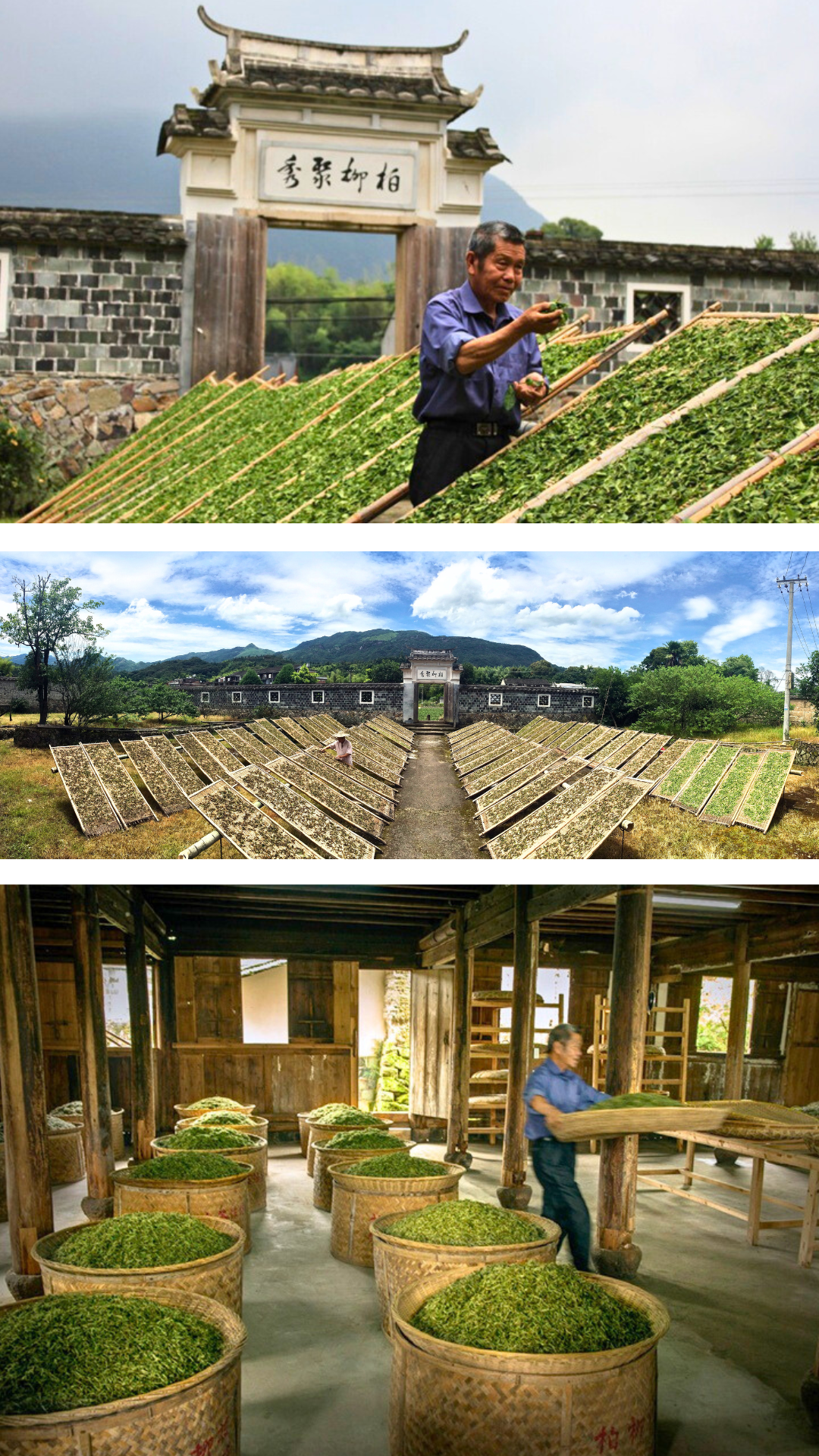
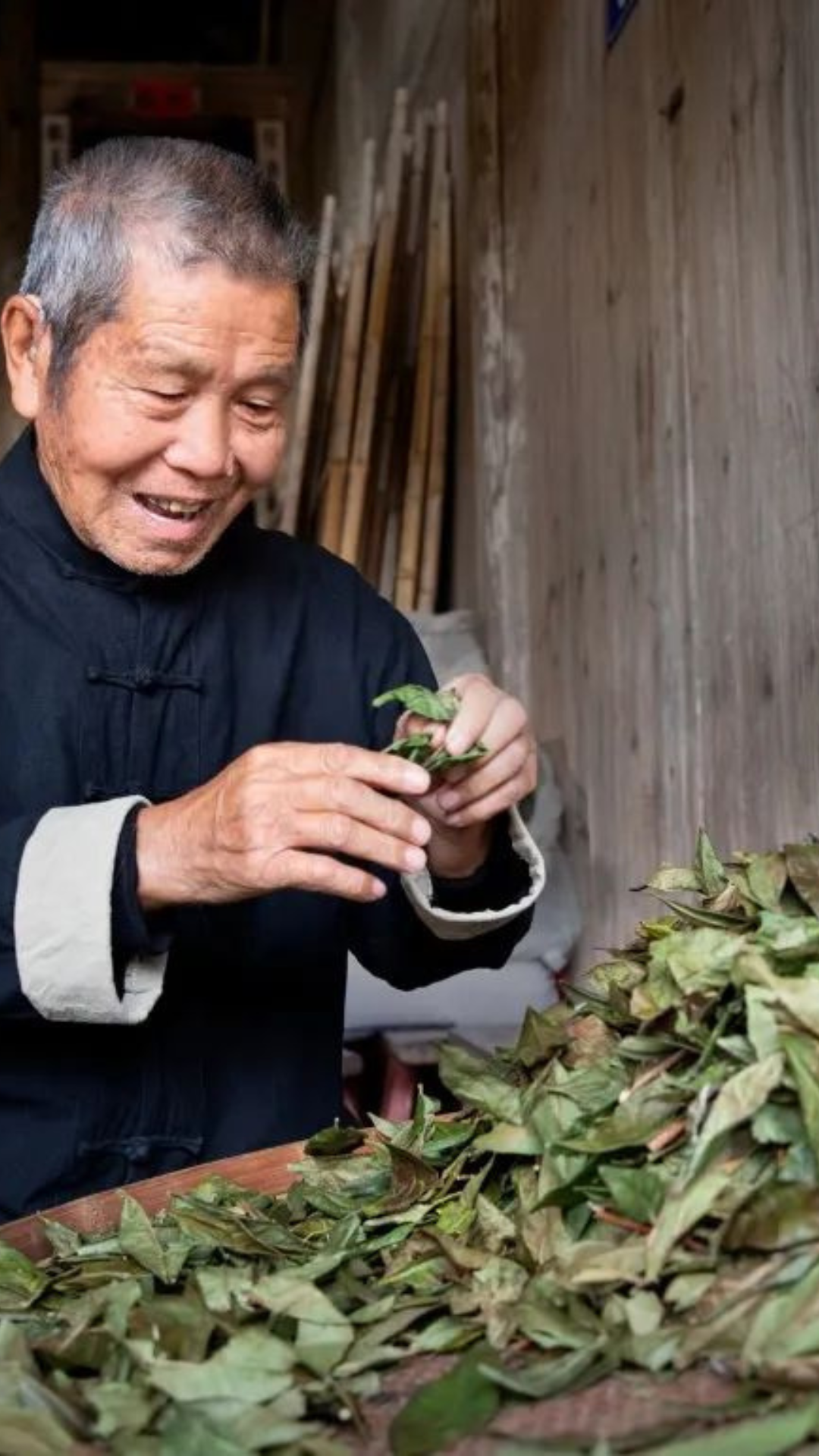
果然是大師之作, 名不虛傳, 花香, 蜜韻, 真的很迷人.

